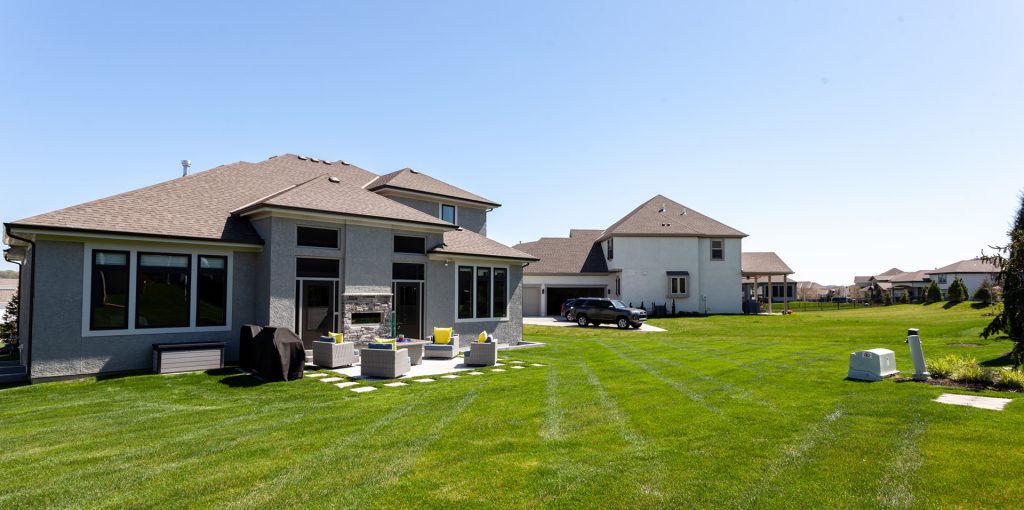Are you noticing cracks in your shingles? Don’t panic – shingle cracking is a common problem that can be addressed with the right knowledge and approach. Understanding the causes, symptoms, and solutions of shingle cracking is crucial for maintaining the integrity and longevity of your roof.
In this article, we will explore the different types of shingle cracking, including age and weathering, poor installation and maintenance, and how to identify the signs and symptoms of shingle cracking. We will also provide actionable steps for repairing shingle cracking and preventing it from happening in the future. By the end of this article, you will have a deeper understanding of shingle cracking and the tools to address it effectively.
Types of Shingle Cracking
Let’s take a look at the different types of shingle cracking and how they can cause problems for your roof. One of the most common types of shingle cracking is thermal shock. This happens when the shingles are exposed to sudden temperature changes, which can cause them to expand and contract rapidly. Over time, this can cause the shingles to crack and lose their protective qualities. If left untreated, thermal shock can lead to leaks and other damage to your roof.
Another type of shingle cracking is material defects. This occurs when the shingles are manufactured poorly or with inferior materials. As a result, they may crack or break more easily than they should, leaving your roof vulnerable to damage. If you suspect that your shingles have material defects, it’s important to have them inspected and replaced as soon as possible to prevent further damage to your roof. By understanding the different types of shingle cracking, you can take steps to address them and protect your roof from further damage.

Age and Weathering as Causes of Shingle Cracking
As your shingles age, they become more susceptible to cracking and weathering. One of the main culprits of shingle cracking is the constant exposure to UV rays from the sun. These rays can break down the chemical structure of the shingles, leading to cracks and other forms of damage. To mitigate this, it’s important to choose shingles with a high UV resistance rating. Additionally, regularly cleaning and maintaining your roof can help prolong the lifespan of your shingles.
Another factor that can contribute to shingle cracking is poor ventilation. Without proper airflow, hot air can become trapped in your attic and cause the shingles to bake from the inside out. This can lead to premature aging and cracking. To combat this, make sure your attic is properly ventilated and consider adding a ventilation fan if necessary. By taking these steps, you can help ensure the longevity of your shingles and protect your home from potential leaks and damage.
Poor Installation and Maintenance as Causes of Shingle Cracking
Improper installation or neglecting regular maintenance can lead to shingle cracking and shorten the lifespan of your roof. Proper installation is key to ensuring your shingles are securely fastened and able to withstand the elements. If shingles are not installed correctly, they may not be able to expand and contract properly, leading to cracking and other damage. It’s important to hire a professional roofing contractor who has the experience and knowledge to install your shingles correctly.
Regular maintenance is also essential in preventing shingle cracking. Over time, debris and dirt can accumulate on your roof, causing damage to your shingles. This can include cracking, splitting, and even missing shingles. Regularly cleaning your roof and removing any debris can help prevent these issues from occurring. Additionally, inspecting your roof for any damage and addressing it promptly can help extend the lifespan of your shingles and prevent more extensive damage from occurring. By taking care of your roof through proper installation and regular maintenance, you can prevent shingle cracking and ensure your roof lasts for years to come.
Signs and Symptoms of Shingle Cracking
If you’re wondering whether your shingles are cracked, you might notice some telltale signs such as visible splits or curling at the edges. You may also observe that the shingles have lost their granules, which is a sign that they are nearing the end of their lifespan. Paying attention to these signs is crucial because shingle cracking is prevalent and can result in severe consequences such as leaks, mold growth, and structural damage to your home.
To avoid the prevalence and severity of shingle cracking, it’s essential to inspect your roof regularly. A thorough inspection can help you detect any signs of damage early and address them before they escalate into bigger problems. If you notice any signs of shingle cracking, it’s advisable to seek the services of a professional roofing contractor. They have the expertise and equipment needed to detect and repair any shingle damage, ensuring that your roof remains in excellent condition for years to come.
Repairing Shingle Cracking
To fix shingle cracking, you’ll need to enlist the services of a professional roofer who can identify the extent of the damage and recommend the appropriate repair method. Temporary fixes such as sealing the crack or replacing a single shingle may help to address the problem in the short term, but they won’t provide a long term solution. A professional roofer will be able to assess the condition of your roof and determine whether a full replacement or a repair is needed.
While it may be tempting to attempt a DIY repair, it’s important to remember that roofing work can be dangerous and complex. Even small mistakes can lead to bigger problems down the line, including leaks and further damage to your roof. Hiring a professional roofer may cost more upfront, but it will ensure that the job is done correctly and that your roof will be protected for years to come. Remember, when it comes to shingle cracking, investing in a long term solution is always the best choice.

Preventing Shingle Cracking in the Future
One way to avoid future shingle cracking is by regularly maintaining your roof. Preventive measures include keeping your roof clean and free from debris. Debris such as branches, leaves, and twigs can accumulate on your roof and trap moisture, which can cause shingle cracking over time. You can use a leaf blower or a broom to keep your roof clean and free from debris.
Another maintenance tip is to check for any signs of damage or wear and tear on your roof. Inspect your roof at least twice a year, and after any major weather events. Look for any cracked, curled, or missing shingles, and have them replaced immediately. Ignoring these issues can lead to more extensive damage and more costly repairs in the future. By regularly maintaining your roof, you can prevent shingle cracking and extend the life of your roof.
Conclusion
Now that you understand shingle cracking and its causes, it’s important to address it promptly to prevent further damage to your roof. If you notice any signs of shingle cracking, such as curling or splitting, it’s best to call a professional roofer to assess the damage and recommend the best course of action.
Repairing shingle cracking may involve replacing individual shingles or even the entire roof, depending on the severity of the damage. To prevent shingle cracking in the future, make sure to have your roof inspected regularly and maintain it properly by keeping it clean and free of debris. By taking these steps, you can ensure the longevity and durability of your roof for years to come.

